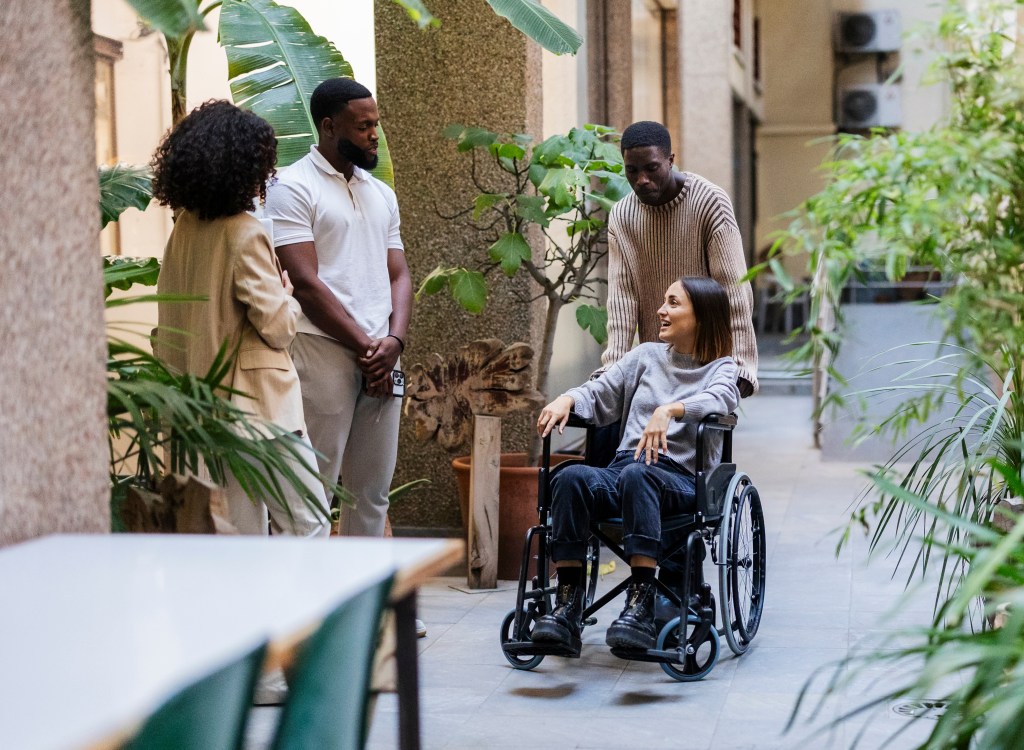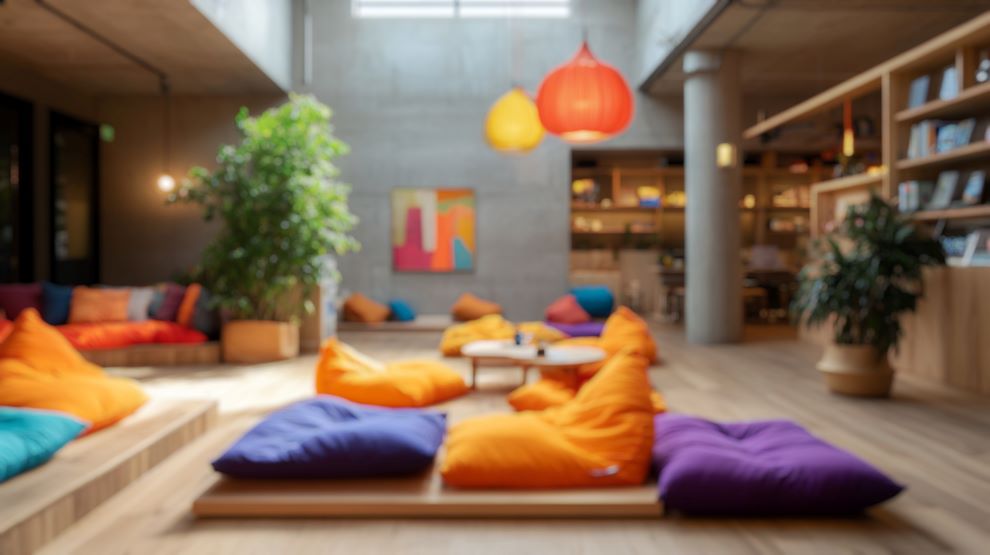As coworking spaces continue to grow in popularity, it’s crucial to ensure that they are designed for everyone—including individuals with disabilities and diverse needs. Accessibility and inclusivity should be at the core of any modern coworking space, fostering an environment where all professionals can thrive.
Here’s how thoughtful design and strategic planning can create coworking spaces that welcome everyone, regardless of physical ability, neurodiversity or other accessibility needs.

Prioritizing Physical Accessibility
The first step in designing an inclusive coworking space is ensuring physical accessibility. This means complying with ADA (Americans with Disabilities Act) guidelines or similar regulations in your country while going beyond the minimum requirements to create a truly welcoming space.
Step-Free Access: Ensure entryways, hallways and common areas are wheelchair-accessible, with ramps and automatic doors.
Adjustable Workstations: Provide height-adjustable desks and ergonomic seating to accommodate different mobility needs.
Accessible Restrooms: Install spacious, well-equipped restrooms with grab bars, emergency call buttons and proper sink heights.
Clear Pathways: Keep walkways wide and free of obstructions to allow easy navigation for individuals using wheelchairs or mobility aids.
Supporting Neurodiverse Professionals
Coworking spaces should also cater to neurodiverse individuals, such as those with autism, ADHD or sensory sensitivities.
Quiet Zones: Designate areas free from excessive noise, bright lights and heavy foot traffic to help those who are sensitive to stimuli.
Flexible Seating Arrangements: Offer private booths, open seating and collaborative areas to accommodate different working preferences.
Soft Lighting Options: Use adjustable or natural lighting to reduce harsh glare and support those with sensory sensitivities.
Clear Signage: Provide visual cues and easy-to-read signs to help individuals navigate the space comfortably.

Inclusive Technology and Digital Accessibility
Technology plays a significant role in coworking spaces, so ensuring digital accessibility is vital.
Screen Reader Compatibility: Ensure booking systems, apps and websites are accessible to individuals using screen readers.
Speech-to-Text Software: This serves as a crucial assistive technology by enabling individuals with visual impairments or mobility limitations to convert spoken words into written text effortlessly. These tools enhance accessibility by allowing users to dictate emails, documents and commands hands-free, improving communication and productivity.
Hearing Loop Systems: Install assistive listening devices in meeting rooms for individuals with hearing impairments. Hearing loop systems use electromagnetic fields to transmit sound directly to hearing aids or cochlear implants, reducing background noise and improving speech clarity for individuals with hearing impairments. Installing these assistive listening devices in meeting rooms ensures better accessibility, allowing participants to engage fully in discussions without struggling to hear.

Community and Cultural Inclusivity
Beyond physical and digital accessibility, fostering a culture of inclusion is just as important.
Diverse Membership Plans: Offer flexible memberships that cater to freelancers, startups and professionals of all backgrounds.
Sensitivity Training: Educate staff and members on inclusivity and disability awareness to create a more welcoming environment.
Community Events: Host workshops and networking events that celebrate diversity and provide learning opportunities.
Continuous Improvement and Feedback
Creating an inclusive coworking space is an ongoing process. Regularly gather feedback from members with diverse needs and adapt the space accordingly. Partnering with accessibility consultants can also help identify areas for improvement.
Conclusion
Designing coworking spaces for accessibility and inclusivity isn’t just a legal obligation—it’s a business advantage. By welcoming a broader range of professionals, coworking spaces can foster richer collaboration, innovation and community. Click below to find out how Yardi Kube coworking software can help you manage a coworking space designed for everyone.
